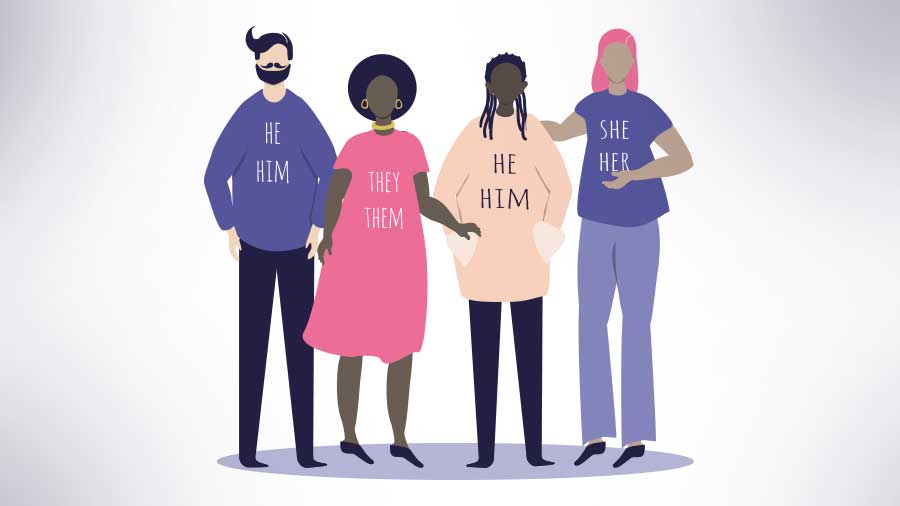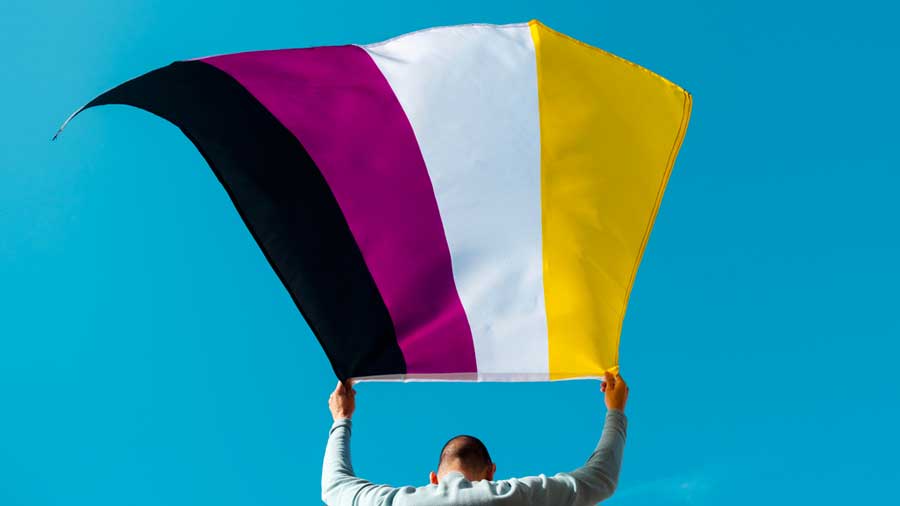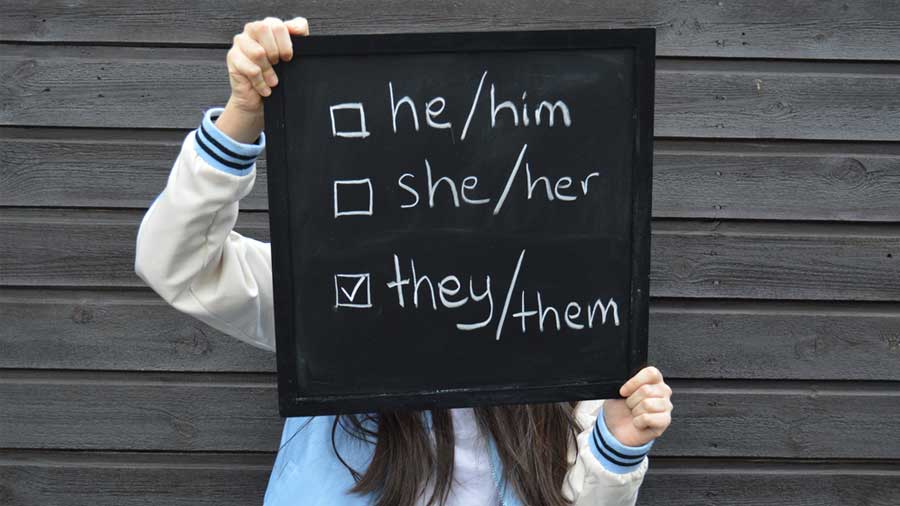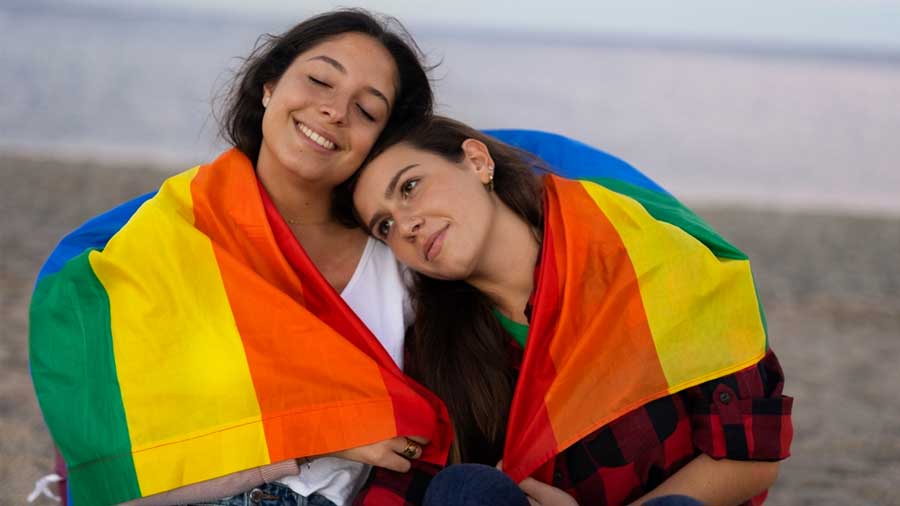My friend came out to me as non-binary. I want to be supportive and understanding, but I am too afraid of asking my friend what this means because I am afraid it might be offensive. What does non-binary mean? and what do ‘they/them’ pronouns mean?
Simply put: when your friend says they identify as non-binary, it means they see their gender as existing outside the binary of ‘man’ and ‘woman’.
Understanding gender vs sex
Imagine you are in the hospital waiting room, eagerly waiting for your sibling to have a baby.
Sex or sex assigned at birth refers to the characteristics which may be rooted in biology (genitals, chromosomes, hormones, ovaries or testes). It is often treated as a binary of ‘male’ and ‘female’ (although it is more of a spectrum). So, when this baby is born, the doctor will likely look at its genitals and say “It’s a boy!” or “It’s a girl!”
However, when you walk into the room, you are not likely to check inside the baby’s diaper to know whether you have a niece or nephew. You’re probably looking at the room covered in blue or pink balloons, toy cars or ribbons and dolls. Immediately, you know whether to say “she is so beautiful” or “he is so handsome”. You are responding to the socially constructed idea of what it means to be a boy or a girl.
Unlike sex, which is seemingly biological, gender is a socially constructed idea, which is used to describe what your societal role should be. It could be made up of your gender identity (how you feel about your own gender), your gender expression (how you express this gender to the world through your life choices, clothes, pronouns, mannerisms and so much more).
If someone’s gender is the same as the sex assigned at birth, we say they are cisgender e.g. a cis female is someone who was assigned female at birth and identifies as a woman. If someone’s gender is different from their sex assigned at birth, we say they are transgender, e.g. a trans woman may have been assigned male at birth.
Most cultures that were colonised by Europeans follow the norm of there being only two genders — man and woman — aka the “gender binary”. However, indigenous cultures around the world have recognised gender in different ways.

Non-binary serves as an umbrella term for all gender identities outside the binary
Beyond the binary
When someone says they are non-binary, it serves as an umbrella term for all gender identities that are outside of the binary of man and woman. For example, it could include people who identify as genderqueer (i.e. they could be neither, both or a combination of masculine, feminine and other genders), agender (i.e. they don’t identify with any gender at all), gender fluid (may experience varying gender identities at different times) or just broadly non-binary. There are many lists of gender terms but how well they are recognised varies widely depending on cultural context. The hijra community is one of many such communities that exist outside the gender binary in our south Asian subcontinent, and goes beyond gender to be a socio-cultural identity.
We can spend hours unpacking and trying to understand gender and sex as a spectrum, but I want to make sure we first get to what this means for you.
Supporting non-binary friends
When it comes to supporting your friend, you have gotten Step 1 right— do not expect your friend to do all the work of informing you what non-binary means. You are doing the right thing by looking for other avenues to do your homework.
However, no matter how much you read, just like not all women or not all men express or experience their gender in one exact cookie-cutter way, non-binary people also have diverse experiences of being non-binary. You can support them by creating spaces where your friend can share their experience without feeling judged and listen with an openness to learn more.
One simple way to make them feel welcome can be to stop using binary gendered language to refer to them as well as others in the space. Instead of “ladies and gentlemen”, say “everyone”; or instead of “boyfriend or girlfriend” you can say “partner”.

The non-binary flag was conceptualised in 2014
Getting pronouns right
If your friend has said they use they/them pronouns, an important step for supporting them through this transition will be to unlearn their old pronouns and reconfigure how you think about their gender in your mind. Here are a few simple tips to help you along the way:
- Say goodbye to ‘him’ and ‘her’: Pronouns are a way to refer to people in third person when you’re talking about them. In English, cis women are typically referred to as ‘she’ or ‘her’ and cis men as ‘he’ or ‘him’. While many languages like English and Hindi use gendered pronouns, Bengali doesn’t use any at all. In the case of your friend, you don’t have to use gendered pronouns at all. Using ‘they’ and ‘them’ when you talk about them in third person would be more comforting and affirming to them than any other pronouns.
- Confirm where and when to use their pronouns: Not every trans person will feel comfortable about being out as trans in every space and community they are part of. Check with your friend — do they want to use these pronouns in front of everyone? Or only with friends? Or only with you? Are they comfortable with you correcting mutual friends if they get the pronouns wrong?
- Apologise when you make mistakes, but not too much: Unlearning their old pronouns might be difficult, and you may make mistakes along the way. However, when you make mistakes and get upset, try not to apologise so much that your friend has to start comforting you when they are already going through the difficult experience of being misgendered. Instead, say a quick sorry and try not to make that mistake again. Similarly, if a friend corrects you, just say ‘thanks’ and move on.
- Say five nice things: Each time you get their pronouns wrong, think of five nice things in your head you would say about your friend with the right pronouns. Better still, find a friend you can practise with so that you get better at it.
Lastly, remember that while you may not know what your friend is going through, and it may feel unfamiliar to you, it is important to remind them and affirm that you will still be around for them in whatever way they need as they embark on this journey.
Karishma Swarup is a Kolkata-born and raised sexuality educator, Instagrammer (@talkyounevergot) and works at a global consulting firm. She busts myths about sex, pleasure, intimacy, orgasms, periods, and all things related to sexual health.
If you have a question you’d like Karishma to answer, send an email on mykolkata@telegraphindia.com with the subject line ‘Questions for Karishma’ or DM/comment on our Facebook, Instagram, or Twitter.








